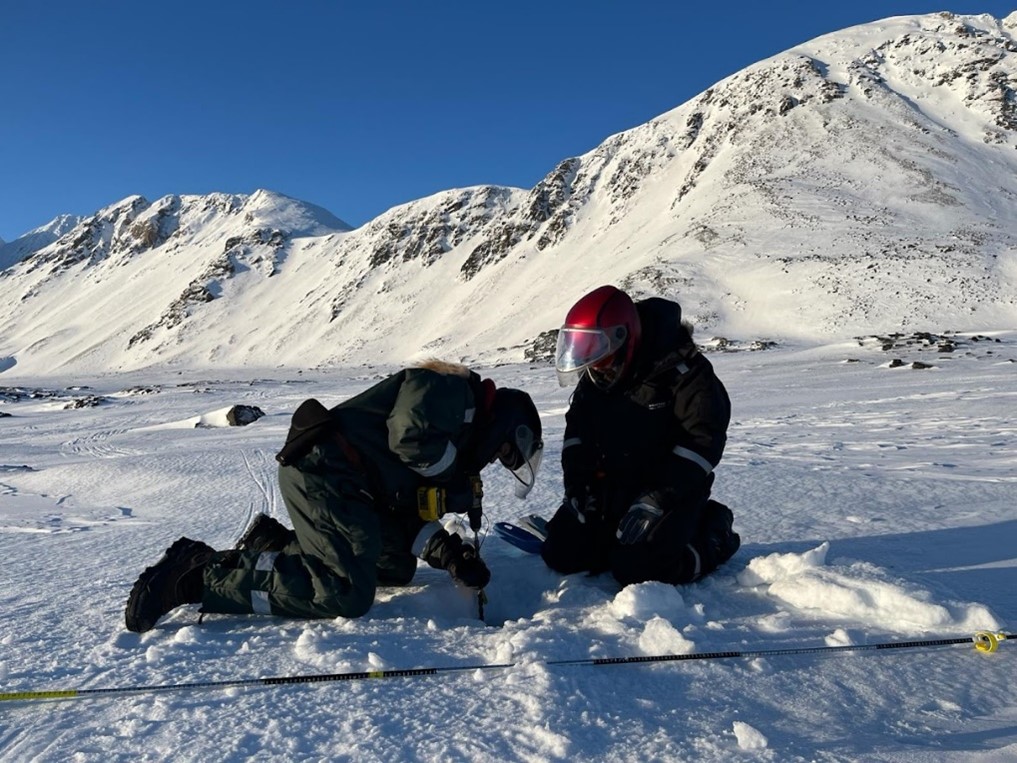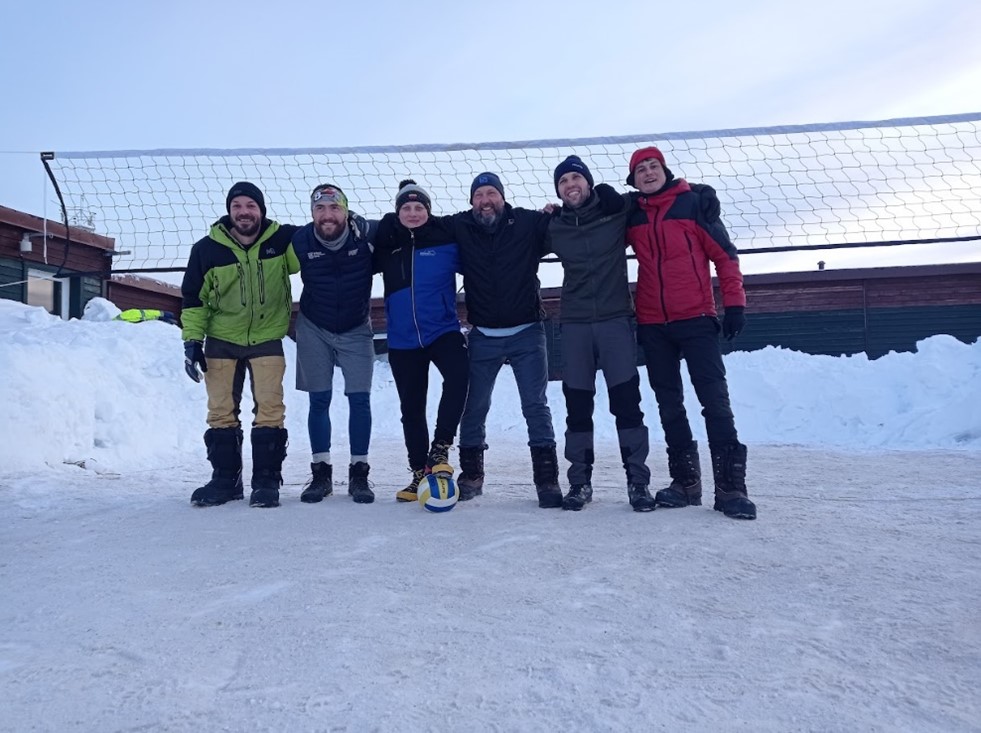The SIOS SnowInOpt optimisation project, led by Eirik Malnes (NORCE), aims to check if satellite measurements of snow depths by the NASA satellite ICESat-2 corresponds well with measurements on the ground. Several field campaigns, where the crew follows the satellite to confirm (or rebut) the satellite estimates, have been carried out in 2023 and 2024 .
From 29 April to 5 May, a joint team from University of Silesia and Institute of Geophysics PAS ran a successful field campaign in Wedel Jarlsberg Land. On 28 March, after the 6+ hour drive from Longyearbyen in sub-optimal conditions (flat light and deep snow), the field team (Michał Laska (UoS), Kamil Kachniarz (UoS), Leo Decaux (UoS), Wlodzimierz Sielski (IG PAS) and Bartlomiej Luks (IG PAS)) reached the Polish Polar Station Hornsund. It was our home for the following week.

The main aim of the fieldwork was to run ground penetrating radar (GPR) profiles along the IceSat-2 track, to retrieve snow depth and snow structure for cal/val exercises. In the days that followed, we performed over 60 km of GPR profiles in the area of Fuglebergsletta, Ralstranda and Elveflya in Hornsund fjord. After completing the profiles in Hornsund, we took a long field day (over 2h drive one way) in the north-western part of Wedel Jarlsberg Land, covering the IceSat-2 tracks in Chamberlindalen (between the Renardbreen and Recherchebreen) and Dunderdalen (a wide valley on the west coast, south from the mouth of Bellsund). GPR soundings were accompanied by manual measurements of snow depth (with snow probe), snow water equivalent and basal ice thickness (over 50 points). In most of the scouted coastal areas, basal ice was a predominant form of surface cover, accompanied by the shallow wind-packed snowpack. There were several spots in Dunderdalen and Elvefly where we did not manage to drill the basal ice to the ground, as the drill (56 cm) was too short.
We experienced all the best things that Svalbard can offer for spring fieldwork: cold weather (down to -22 °C), strong winds, blue skies, and whiteouts. Luckily, thanks to being hosted by the Polish Polar Station Hornsund, cold weather and strong winds did not fatigue us too much. We enjoyed the Station’s crew help (some broken cables), hospitality and comfort food over Easter.




























